Zhuifeng tougu capsules inhibit the TLR4/MyD88/NF-κB signaling pathway and alleviate knee osteoarthritis: In vitro and in vivo experiments
- PMID: 36188596
- PMCID: PMC9521277
- DOI: 10.3389/fphar.2022.951860
Zhuifeng tougu capsules inhibit the TLR4/MyD88/NF-κB signaling pathway and alleviate knee osteoarthritis: In vitro and in vivo experiments
Abstract
Background: Knee osteoarthritis (KOA), a chronic degenerative disease, is mainly characterized by destruction of articular cartilage and inflammatory reactions. At present, there is a lack of economical and effective clinical treatment. Zhuifeng Tougu (ZFTG) capsules have been clinically approved for treatment of OA as they relieve joint pain and inflammatory manifestations. However, the mechanism of ZFTG in KOA remains unknown. Purpose: This study aimed to investigate the effect of ZFTG on the TLR4/MyD88/NF-κB signaling pathway and its therapeutic effect on rabbits with KOA. Study design: In vivo, we established a rabbit KOA model using the modified Videman method. In vitro, we treated chondrocytes with IL-1β to induce a pro-inflammatory phenotype and then intervened with different concentrations of ZFTG. Levels of IL-1β, IL-6, TNF-α, and IFN-γ were assessed with histological observations and ELISA data. The effect of ZFTG on the viability of chondrocytes was detected using a Cell Counting Kit-8 and flow cytometry. The protein and mRNA expressions of TLR2, TLR4, MyD88, and NF-κB were detected using Western blot and RT-qPCR and immunofluorescence observation of NF-κB p65 protein expression, respectively, to investigate the mechanism of ZFTG in inhibiting inflammatory injury of rabbit articular chondrocytes and alleviating cartilage degeneration. Results: The TLR4/MyD88/NF-κB signaling pathway in rabbits with KOA was inhibited, and the levels of IL-1β, IL-6, TNF-α, and IFN-γ in blood and cell were significantly downregulated, consistent with histological results. Both the protein and mRNA expressions of TLR2, TLR4, MyD88, NF-κB, and NF-κB p65 proteins in that nucleus decreased in the ZFTG groups. Moreover, ZFTG promotes the survival of chondrocytes and inhibits the apoptosis of inflammatory chondrocytes. Conclusion: ZFTG alleviates the degeneration of rabbit knee joint cartilage, inhibits the apoptosis of inflammatory chondrocytes, and promotes the survival of chondrocytes. The underlying mechanism may be inhibition of the TLR4/MyD88/NF-kB signaling pathway and secretion of inflammatory factors.
Keywords: NF-κB; TLR4; Zhuifeng tougu capsules; inflammatory factors; innate immune; knee osteoarthritis.
Copyright © 2022 Xu, Li, Wu, Yan, Mi, Yi, Tan, Kuang and Lu.
Conflict of interest statement
Author GK was employed by The First Hospital of Hunan University of Chinese Medicine and Hinye Pharmaceutical Co., Ltd. The remaining authors declare that the research was conducted in the absence of any commercial or financial relationships that could be construed as a potential conflict of interest.
Figures


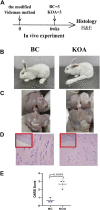


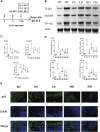
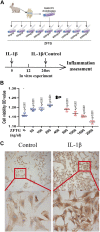
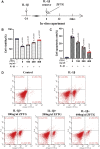
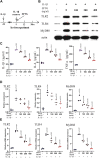
Similar articles
-
[Ligusticum cycloprolactam inhibits IL-1β-induced apoptosis and inflammation of rat chondrocytes via HMGB1/TLR4/NF-κB signaling pathway].Zhongguo Zhong Yao Za Zhi. 2024 Feb;49(4):1007-1016. doi: 10.19540/j.cnki.cjcmm.20230904.401. Zhongguo Zhong Yao Za Zhi. 2024. PMID: 38621908 Chinese.
-
Non-weight-bearing exercise attenuates papain-induced knee osteoarthritis in rats via the TLR4/MyD88/NF-κB signaling pathway.J Orthop Surg Res. 2023 Sep 18;18(1):695. doi: 10.1186/s13018-023-04201-w. J Orthop Surg Res. 2023. PMID: 37718444 Free PMC article.
-
Investigate the Therapeutic Effect of Ibandronate Sodium on Knee Osteoarthritis Based on TLRs/MyD88/NF-κB Signaling Pathway in Vitro and in Vivo.Discov Med. 2024 Jan;36(180):100-112. doi: 10.24976/Discov.Med.202436180.9. Discov Med. 2024. PMID: 38273750
-
Vitamin D and autophagy in knee osteoarthritis: A review.Int Immunopharmacol. 2023 Oct;123:110712. doi: 10.1016/j.intimp.2023.110712. Epub 2023 Jul 29. Int Immunopharmacol. 2023. PMID: 37523972 Review.
-
The role of oxidative stress in the development of knee osteoarthritis: A comprehensive research review.Front Mol Biosci. 2022 Sep 20;9:1001212. doi: 10.3389/fmolb.2022.1001212. eCollection 2022. Front Mol Biosci. 2022. PMID: 36203877 Free PMC article. Review.
Cited by
-
A bibliometric analysis of studies related to the nuclear factor kappa B signaling pathway in knee osteoarthritis between 2004 and 2023.Front Med (Lausanne). 2025 Jun 25;12:1572161. doi: 10.3389/fmed.2025.1572161. eCollection 2025. Front Med (Lausanne). 2025. PMID: 40636390 Free PMC article.
-
Robinin protects chondrocytes injury via TLR2/TLR4/NF-κB signaling in osteoarthritis.Cell Biochem Biophys. 2025 Mar;83(1):647-656. doi: 10.1007/s12013-024-01497-1. Epub 2024 Dec 14. Cell Biochem Biophys. 2025. PMID: 39673685
-
Link between TLR4/MyD88/NF-κB levels, inflammation, and infectious preterm birth in pregnant women.Medicine (Baltimore). 2025 Aug 8;104(32):e43509. doi: 10.1097/MD.0000000000043509. Medicine (Baltimore). 2025. PMID: 40797405 Free PMC article.
-
Zhuifeng Tougu capsules in the treatment of knee osteoarthritis (cold dampness obstruction syndrome): a randomized, double blind, multicenter clinical study.Chin Med. 2024 Jan 25;19(1):18. doi: 10.1186/s13020-024-00880-7. Chin Med. 2024. PMID: 38273399 Free PMC article.
-
Efficacy and safety of combined Chinese and Western medicine in the treatment of knee osteoarthritis: a prospective, multicenter cohort study.Front Pharmacol. 2023 Aug 28;14:1176980. doi: 10.3389/fphar.2023.1176980. eCollection 2023. Front Pharmacol. 2023. PMID: 37701040 Free PMC article.
References
-
- Barreto G., Senturk B., Colombo L., Bruck O., Neidenbach P., Salzmann G., et al. (2020). Lumican is upregulated in osteoarthritis and contributes to TLR4-induced pro-inflammatory activation of cartilage degradation and macrophage polarization. Osteoarthr. Cartil. 28 (1), 92–101. 10.1016/j.joca.2019.10.011 - DOI - PubMed
LinkOut - more resources
Full Text Sources

